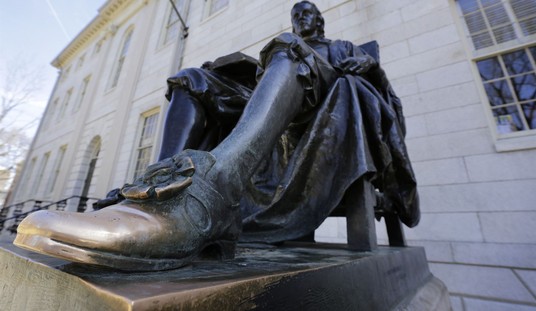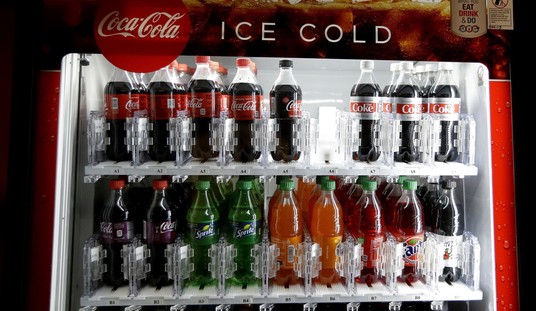I've always been a little bemused by the whole notion of "death rates." I mean, throughout human history, the death rate has never changed by a jot; it's always been 100%, one to a customer, no refunds, no discounts, no do-overs, no nothing, no kidding. So it's interesting to see an... interesting interpretation of ice core data from Antarctica, claiming support for not only anthropogenic climate change to native deaths due to colonization.
That is, to my thinking, a bit of a stretch.
The air trapped in the ice can reveal information about things like droughts and volcanic eruptions. “Measurements of sulfate from ice cores mark large volcanic eruptions in the past. By comparing sulfate in ice cores in Greenland and Antarctica, scientists can deduce which hemisphere the eruption originated in and how large the eruption was,” says (Carrie Morrill, the director of World Data Service for Paleoclimatology at NOAA’s National Centers for Environmental Information.) These frozen records also show the progress of human industry. “Traces of metals such as copper and lead in ice cores provide evidence for mining and smelting operations from past civilizations, including the Greeks, Romans, and Incas, as well as for our use of leaded gasoline after the 1960s.”
And for (Amy King, a research scientist for the British Antarctic Survey,) the ice cores reveal another deadly side of human activity. In a recently released study from those ice cores, King and a team of researchers from the University of Cambridge and the British Antarctic Survey were able to see the impact of colonization on human populations.
Interestingly, the original study that this article discusses says nothing about colonization, except for a citation tacked on to a statement of uncertainty:
...the most rapid CO2 changes present in the Law Dome record have been difficult to explain within our current understanding of the carbon cycle and in even the most complex Earth System Models9,10,11.
The footnote #11 is to a different paper, which does not appear to involve any study of ice cores:
Koch, A., Brierley, C., Maslin, M. M. & Lewis, S. L. Earth system impacts of the European arrival and Great Dying in the Americas after 1492. Quat. Sci. Rev. 207, 13–36 (2019).
Look, the arrival of Europeans in the New World wasn't without its unfortunate aspects. Yes, there were disease exchanges; mind you, people in those days had very little idea of how diseases were spread or how natural immunity works. The whole "smallpox-infested blankets" thing is a cheap lie; smallpox can only be spread through close contact. But if some heads-in-the-clouds types (or maybe some with their heads someplace else) like to posit that the native peoples of the Americas would be better off today if Europeans had never come to the New World, that is the purest of horse squeeze; there is no reason to be nostalgic about a Stone Age lifestyle, with life expectancy in the 30s, double-digit infant mortality, disfiguring diseases and regular seasons of starvation. Oh, and don't forget the Aztecs practicing human sacrifice on a horrific scale.
I'd much rather deal with first-world problems.
See Related: WATCH: Things Get Awkward When 'View's' Sunny Hostin Reveals She Discovered Her Ancestors Owned Slaves
First-World Problem: Scholars Insist We Need More Gay People Studying Fish
But it's the climate-change angle that really seems a stretch in this piece.
While widespread disease once had the ability to alter Earth’s atmosphere, the equation isn’t so simple anymore. The most recent pandemic also resulted in millions of deaths, but that event likely won’t be locked within sheets of ice. For one thing, the total of fatalities was a smaller percentage of today’s larger global population. Also, “there are much larger background emissions of carbon dioxide today compared to the 16th and 17th century,” says King. “Although a lot of things changed for many people during the pandemic, most of the biggest emitters didn’t stop.” We’re currently still experiencing a rapid increase in carbon dioxide in the atmosphere.
King says that her team’s findings show just how much human actions matter. She explains, “Human changes at the time caused a noticeable effect on our atmosphere, showing how influential humans were even at this early time.”
Correlation does not equal causation, and King is leaning on correlation and, worse, inference. Ice cores can, yes, provide some interesting data on CO2 ratios and, very broadly, trends in temperature. But that's quite a lateral arabesque to go from "CO2 ratios changing," which has happened continually since the Earth formed, and "CO2 ratios changing due to human activity," which to my modest scientific background can't be concluded from the data presented here.
Science is supposed to be data-driven. If one's data doesn't support the hypothesis, one changes the hypothesis and then it's back to the drawing board. This article - not a peer-reviewed journal article, but a consumer piece for popular consumption - makes a lot of logical leaps that the data and the original study just don't appear to support.















